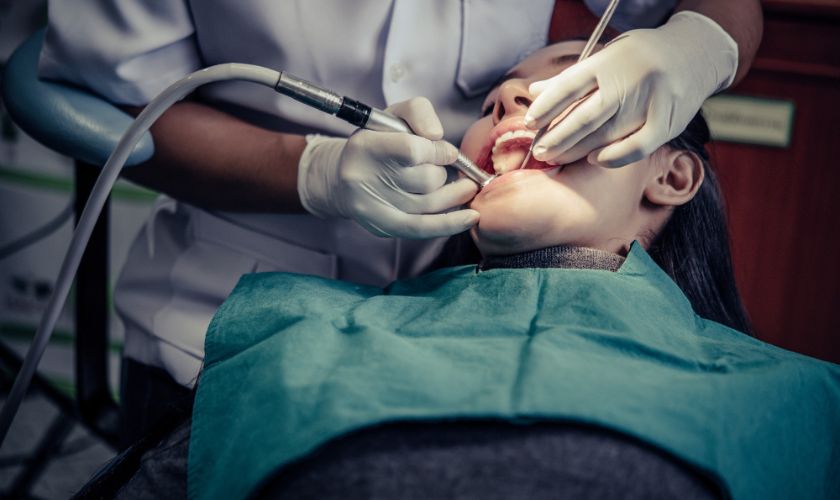Welcome to the captivating saga of wisdom tooth removal, where dental adventures unfold, and transformations are revealed. In this remarkable journey, we delve into the intricacies of removing wisdom teeth and uncovering the mysteries that lie within. From the initial anticipation to the momentous procedure, we witness the triumph of dental professionals as they skillfully navigate through the complexities of oral surgery. With each extraction, a story unfolds—a tale of discomfort turned relief, of wisdom morphing into wonder. Prepare to be amazed as we unravel the tooth removal saga, explore the journey from wisdom to wow, and discover its remarkable impact on oral health and overall well-being.
Wisdom Tooth Removal: Overview
Wisdom tooth removal is a dental procedure that involves the removal of one or more wisdom teeth, also known as third molars. These teeth typically erupt between the ages of 17 and 25 but often cause problems due to a lack of space in the mouth. The extraction may be necessary if the wisdom teeth are impacted, partially erupted, or causing pain, infection, crowding, or damage to neighboring teeth. A dental professional performs the procedure under local anesthesia or sedation and involves carefully extracting the affected tooth from the socket. Wisdom tooth removal can alleviate discomfort, prevent oral complications, and promote oral health.

Anatomy And Function Of Wisdom Teeth
Wisdom teeth, or third molars, are located at the back of the mouth. They were historically used for chewing tough foods, but modern humans often lack sufficient space to erupt properly. Their functional role is limited, and they can cause problems such as crowding and misaligning other teeth.
Potential Issues with Wisdom Teeth
1. Crowding: Wisdom teeth can cause crowding and misalignment of existing teeth, leading to bite problems and the need for orthodontic treatment.
2. Impaction: Wisdom teeth may become impacted, meaning they fail to emerge from the gums fully. It can result in pain, infection, and the formation of cysts or tumors.
3. Increased Risk of Dental Problems: Partially erupted wisdom teeth can be challenging to clean properly, increasing the risk of tooth decay, gum disease, and oral infections in the surrounding area.
Indications For Wisdom Tooth Removal
1. Pain and Discomfort: Wisdom teeth can cause persistent or recurring pain, especially when they become impacted or partially erupted.
2. Infections and Inflammation: Partially erupted wisdom teeth can create pockets of gum tissue that are difficult to clean, leading to infections and inflammation known as pericoronitis.
3. Crowding and Bite Problems: Wisdom teeth can exert pressure on existing teeth, causing them to shift and leading to overcrowding or changes in the bite.
4. Tooth Decay and Gum Disease: Due to their location at the back of the mouth, wisdom teeth are often hard to reach and clean effectively, making them more susceptible to decay and gum disease.
5. Orthodontic Considerations: If a person is undergoing orthodontic treatment, extracting wisdom teeth may be necessary to create space and avoid disrupting the alignment of the teeth.
Preparing For Wisdom Tooth Removal
1. Consultation and Evaluation: Schedule a consultation with a dental professional who will evaluate your wisdom teeth and overall oral health. It will help determine the necessity and timing of the extraction.
2. Pre-operative Instructions: Follow any pre-operative instructions provided by your dentist or oral surgeon. These may include guidelines on fasting before the procedure and adjusting medications, if necessary.
3. Arrangements for Post-Surgery Care: Plan for someone to accompany you to the appointment and drive you home afterward, as the effects of anesthesia may require assistance. Additionally, ensure you have the necessary supplies at home, such as ice packs, soft foods, and pain relief medication, to aid in your recovery.
The Wisdom Tooth Extraction Process
1. Anesthesia Administration: Before the extraction, the dental professional will administer local anesthesia to numb the area around the tooth or may recommend sedation for a more relaxed experience. It helps ensure a comfortable procedure.
2. Tooth Extraction: The dentist or oral surgeon will carefully remove the wisdom tooth from its socket. They may need to make an incision in the gum tissue or remove a portion of the tooth if it is impacted or partially erupted. Specialized instruments are used to loosen and extract the tooth gently.
3. Closure and Aftercare: Once the tooth is extracted, the dental professional may place dissolvable stitches to help it heal. They will provide instructions for post-operative care, including managing any bleeding, swelling, or discomfort. Following these instructions, taking prescribed medications, and maintaining good oral hygiene is essential for smooth recovery. Follow-up appointments will be scheduled to monitor healing progress.
Source: Teeth Talk Girl
Recovery And Post-Extraction Care
1. Managing Discomfort: It is normal to experience some discomfort, swelling, and mild bleeding after wisdom tooth removal. Use prescribed pain medications and apply ice packs to the external area of the extraction site to reduce swelling. Avoid strenuous activities and follow a soft-food diet during the initial days.
2. Oral Hygiene Practices: Gently brush your teeth, avoiding the extraction site, starting from the second day after the procedure. Rinse your mouth with warm saltwater several times daily to keep the area clean and promote healing. Be cautious not to disturb the blood clot that forms in the socket.
3. Follow-Up Appointments: Attend the scheduled follow-up visits with your dental professional to ensure proper healing. They will monitor the progress, remove any stitches if necessary, and address any concerns or complications that may arise during the recovery process.
FAQs About Wisdom Tooth Removal
1. Is Wisdom Tooth Removal Painful?
Wisdom tooth removal is typically performed under local anesthesia or sedation, ensuring you won’t feel pain during the procedure. However, some discomfort and swelling may be experienced during recovery, which can be managed with prescribed pain medication.
2. How Long Does The Recovery Process Take?
The recovery time can vary depending on individual factors, such as the complexity of the extraction and how well you follow post-operative care instructions. Generally, the initial healing takes about a week to ten days, but complete healing may take a few weeks to a few months.
3. Are There Any Risks Or Complications Associated With Wisdom Tooth Removal?
As with any surgical procedure, there are potential risks and complications, although they are relatively rare. These may include dry sockets, infection, nerve damage, or damage to adjacent teeth. However, the risks can be minimized by following proper pre-and post-operative care guidelines and choosing a skilled professional.
4. When Is The Right Time To Have Wisdom Teeth Extracted?
The ideal timing for wisdom tooth removal varies from person to person. It is often recommended to have them removed during the late teens or early twenties before the roots fully develop and complications arise. However, a dental professional will assess your situation and provide personalized advice.
5. Is Wisdom Tooth Removal Always Necessary?
Not everyone needs to have their wisdom teeth extracted. If your wisdom teeth are healthy, fully erupted, properly positioned, and not causing any issues, they may not require extraction. Regular monitoring and evaluation by a dental professional can determine if extraction is necessary based on your specific oral health needs.
In conclusion, wisdom tooth removal is a common dental procedure that addresses issues associated with impacted or problematic wisdom teeth. It can alleviate pain, prevent complications, and promote overall oral health. Seeking professional guidance, following post-operative care instructions, and maintaining good oral hygiene is crucial for a successful and comfortable recovery.




